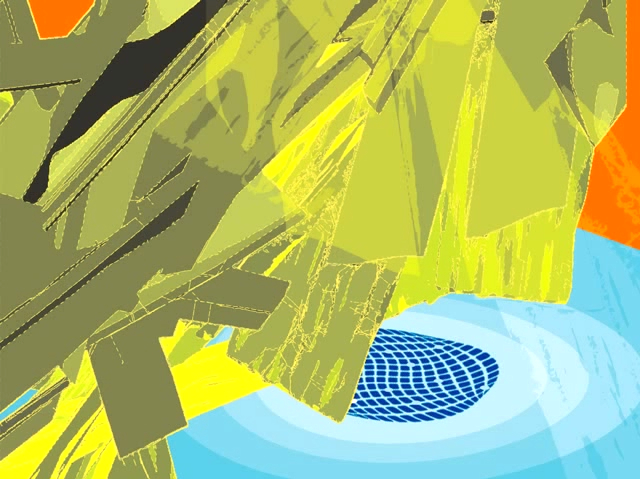Edito
Focus : video works by Abhishek Hazra
This online program is an extension of the series of screenings that took place between the film curator Charu Maithani (for Khoj, New Delhi) and CJC (Paris). This program focuses on two works by Abhishek Hazra.
1/ What made you interested in exploring and exploiting cinematically the realm of computer languages? This seems to be a conundrum for many filmmakers today : how to translate cinematically the experience of computing and all social consequences that unfolds from the so called "world wide web". We still do not have many films succeeding in tackling coding on screen without replicating the gimmicky typing of cryptic green acronyms. How do you find the realm of cinema and audiovisual works capable on reflecting on those contemporary acclimation to the realm of computing?
A.H : First of all i have to admit that while it is wonderful for my work to be showcased in an Experimental cinema context, i don’t really see myself as a film person. However, that said, i do remain fascinated by the historical linkages between experimental cinema, particularly structural film and certain forms of generative, rule-driven conceptual art. And when i started looking into the shared ideas that circulated both between structural film and conceptual art from the sixties and seventies, it was readily apparent that this discursive space shared common ground with the world of computation and algorithms. Although i am not a programmer myself, this then is the context that frames my interest in computer languages. So while it may be true that the figure of the computer geek typing green hieroglyphics on a black screen enters the popular consciousness more visibly with the advent of the internet, especially the world wide web, there is a much longer history of artists working actively with computers and electronic technology. And honestly, for that matter, one doesn’t need to always work with physical device of a computer or a mainframe to seriously engage with ideas around computation. You only have to look at the work of Georges Perec or the Oulipo. These are all luminous and humbling examples, so it will be presumptuous of me to dwell on them further, but i hope you will see where i am coming from.
2/ I am interested in your use of text in this video work. You present your work as in reference to the context of coding and computer languages. Yet, the use of text in visual cinematic work is also very "coded". The Kolkota based filmmaker Q who was present at CJC 2014 festival edition did mentioned his love for the graphical use of text in films's subtitles. He suspected his affinity for a graphical use of text in film may come from the fact that many films were only made accessible with subtitles which opens to potential gap between what is said and how it is translated. Would you also say that your work plays around narrative misleadings from what can only be given textually as a lack a better source?
A.H : My use of text in these videos comes from my interest in exploring the relationship between textuality and materiality. One can of course view text as a free floating agglomeration of alphanumeric characters than can effortlessly flow into any material container that is capable of receiving it: be it an LED ticker, a watch display face or an acid free rag paper. But you also sense that there is much more at play here. How indeed does the material conditions of ones encounter with a given text attenuate or even intervene ones perception of that text? So in interspersing these image and text fragments together in these works i am perhaps trying to create a field where the reader/viewer can oscillate between different poles of engagement, a textual one and an image based one.
3/ You create speculative fiction works. The use of text here has a function in communicating the narrative of the work. Could you elaborate on this.
A.H : Since the word ‘communication’ always makes me a bit uncomfortable, let me put it this way: in these works the narrative is the armature around which i try to weave together the speculation that constitutes the primary invitation to the reader. An invitation to explore some thought experiments. Articulating these through texts perhaps has the advantage of creating a more open ended invitation since the reader-viewer is not confronted with a physically realised material entity. This also connects back to my earlier response around materiality and text: my entire fascination with text stems precisely from its hybrid nature - as a medium, text seems to promise a more lightweight encounter than physical objects but is also simultaneously caught up within other networks of materiality.
4/ The digital medium is very much about the user/audience response and interaction. Have you thought of incorporating this attribute in your work.
A.H : I have always seen the digital medium as yet another medium and was never very enthused about the ‘interactive’ claims that were often made about it, particularly in the heydays of the early nineties when the more vogue term used to be something called New Media. So while i have done works where reader/viewer/audience (i am a bit ambivalent about the word ‘user’ in this context) formed an important part of the work - for instance, #cloudrumble56, or Cantordust Touring Machine - interactivity per se has not really been an active area of interest for me.
5/ While making works, your role is like that of lexicographer-chemist (to borrow the words from one of your works). Your works analyse the use of words, their relationship and meaning, just like a chemist would test the mixing of chemicals in a bid to find their identity and ability to amalgamate. Where do images fit in this equation?
A.H : Images are the furniture which can offer a resting place - much like those longed for benches in front of a video projection - to contemplate on the text. But i think it works the other way round too: texts too can be your paddle boat as you try to float around little eddies of images.
Links :
http://abhishekhazra.net/cloudrumble56
http://abhishekhazra.net/The-Cantordust-Touring-Machine
Auteurs de la programmation :Abhishek Hazra
Abhishek Hazra is an artist based in Bangalore, India. His close yet idiosyncratic study of the historiography of science has led him to examine various technologies of knowledge production and dispersion. He uses video, performance and prints that often integrate textual fragments drawn from real and fictional scenarios. The idea of the thought experiment – where one thinks of things and non-things without necessarily being trapped in things – has always fascinated him.
[programme en ligne]
archives
- Focus : video works by Abhishek Hazra
Mise en ligne le /06/0015

